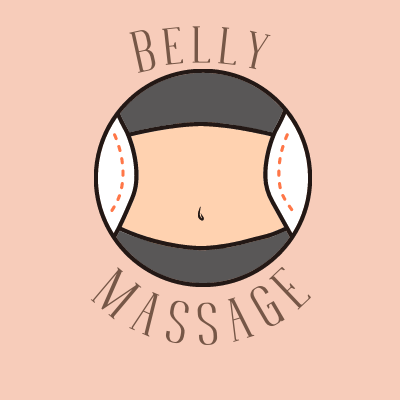Types of Massages Involving Abdomen
Massaging the abdomen is a practice that has been utilized for centuries in various cultures around the world. There are several types of massages that involve the abdomen, each with its own unique benefits and techniques.
One common type of belly massage is the abdominal massage, which focuses specifically on the stomach area. This type of massage can help improve digestion, reduce bloating, and alleviate discomfort associated with gastrointestinal issues. It involves gentle, circular movements and can be performed with the client lying down or sitting up.
Another type of massage that involves the abdomen is the Ayurvedic abdominal massage, which is based on the principles of Ayurveda, an ancient Indian healing system. This type of massage aims to balance the body’s doshas (energies) and improve overall well-being. It typically involves the use of warm oils and gentle strokes on the abdomen.
Additionally, some forms of traditional Chinese medicine incorporate abdominal massage as part of holistic healing practices. These massages focus on stimulating specific acupressure points in the abdomen to promote better energy flow and address various health concerns.
Qualifications for Abdominal Massage
When seeking a professional to perform abdominal massage, it is important to ensure that they have the necessary qualifications and expertise. Qualified massage therapists who specialize in abdominal massage should have completed comprehensive training in anatomy, physiology, and massage techniques.
Look for a massage therapist who is certified by a reputable massage therapy association or has obtained a license to practice in their jurisdiction. This indicates that they have met the educational and ethical standards required to provide safe and effective massage treatments, including abdominal massage.
Furthermore, a skilled abdominal massage therapist should have a deep understanding of the abdominal region’s anatomy and its connection to overall health. They should be able to tailor the massage techniques to address specific concerns such as digestive issues, stress-related tension, or menstrual discomfort.
It is advisable to inquire about the therapist’s experience and training in abdominal massage before scheduling a session. A qualified professional will be transparent about their credentials and be able to answer any questions you may have about the treatment.
Dealing with Ticklishness During a Tummy Massage

It is not uncommon for individuals to experience ticklishness during a tummy massage, as the abdomen can be a sensitive area for many people. However, there are strategies that both the client and the massage therapist can employ to address this issue and ensure a comfortable experience.
For clients who are too ticklish for a tummy massage, communication is key. It is important to openly discuss any concerns or discomfort with the massage therapist before the session begins. This allows the therapist to adjust their approach and use techniques that are less likely to trigger ticklish sensations.
Additionally, deep breathing and relaxation techniques can help minimize ticklishness during the massage. Encouraging the client to take slow, deep breaths and focus on relaxing the abdominal muscles can make the experience more comfortable and enjoyable.
From the therapist’s perspective, using firmer pressure and gradually introducing abdominal massage techniques can help desensitize the area and reduce ticklishness over time. It is essential for the therapist to be attentive to the client’s feedback and adjust their approach accordingly.
Some clients may find it helpful to have distractions during the massage, such as soothing music or guided imagery, to shift their focus away from ticklish sensations. Creating a calming and supportive environment can contribute to a more positive massage experience for individuals who are particularly sensitive to tickling.
Ultimately, open communication, relaxation techniques, and a considerate approach from the massage therapist can help address ticklishness and ensure that clients can still benefit from the therapeutic effects of abdominal massage.
Addressing Ticklishness for Abdominal Massage
For some individuals, the idea of having their abdomen massaged can be a source of apprehension, as the belly area can be particularly sensitive and ticklish. This common reaction can make it challenging to fully relax and enjoy the benefits of an abdominal massage.
If you find yourself feeling overly ticklish during an abdominal massage, there are a few strategies you can try to make the experience more comfortable:
Communication with the Massage Therapist
Open communication with your massage therapist is crucial. Before the massage begins, let them know that you are prone to ticklishness in the abdominal area. This will allow the therapist to adjust their techniques and approach accordingly, ensuring a more pleasant and relaxing experience for you.
Your massage therapist may suggest starting with lighter, more gentle touches on the abdomen and gradually increasing the pressure as you become more comfortable. They may also avoid certain areas that are particularly sensitive for you. By working together, you can find the right balance of pressure and technique to minimize the tickling sensation.
Relaxation Techniques
Practicing relaxation techniques before and during the abdominal massage can help you manage the ticklish response. Deep breathing exercises, progressive muscle relaxation, or visualization techniques can all be effective in reducing tension and increasing your tolerance to the massage.
By consciously relaxing your abdominal muscles and focusing on your breath, you can train your body to respond to the massage with less sensitivity. This can take some practice, but with time and patience, you may find that your ticklish reactions diminish, allowing you to fully enjoy the benefits of the massage.
Gradual Exposure
If the ticklish response is particularly persistent, you may find it helpful to start with gradual exposure to abdominal massage. Begin with light, gentle strokes on the outer edges of your abdomen and work your way inward over the course of several sessions.
This gradual approach allows your body to become accustomed to the sensations, and your massage therapist can adjust the pressure and techniques accordingly. With each session, you may find that your tolerance for abdominal massage increases, and the ticklish response becomes less pronounced.
Maintaining a Healthy Gut
Interestingly, the degree of ticklishness experienced during abdominal massage can be influenced by the overall health of your digestive system. Maintaining a balanced gut microbiome and addressing any underlying gastrointestinal issues may help to reduce sensitivity in the abdominal area.
Incorporating gut-friendly foods, such as probiotic-rich fermented foods, into your diet, and addressing any digestive concerns with the guidance of a healthcare professional, can contribute to a more comfortable abdominal massage experience.
Exploring Different Massage Techniques
If traditional abdominal massage techniques continue to be a source of discomfort due to ticklishness, you may find relief in exploring alternative massage approaches. For example, some people find that using a light, feathery touch or incorporating gentle tapping or vibration on the abdomen can be less ticklish than traditional kneading or circular motions.
Your massage therapist can work with you to experiment with different techniques and find the approach that works best for your individual needs and sensitivity levels. By being open-minded and willing to try new methods, you may discover a style of abdominal massage that you find both comfortable and beneficial.
Incorporating Abdominal Massage into Your Self-Care Routine
Regardless of your level of ticklishness, incorporating abdominal massage into your self-care routine can offer a wide range of benefits, from improved digestion to reduced stress and tension. By being patient, communicative, and open to exploring different techniques, you can find a way to make abdominal massage a valuable part of your overall health and wellness regimen.
Remember, the key is to work closely with a qualified massage therapist who understands your specific needs and is committed to helping you overcome any challenges you may face, including managing ticklishness. With their guidance and your willingness to experiment, you can unlock the many advantages of this powerful form of bodywork.




